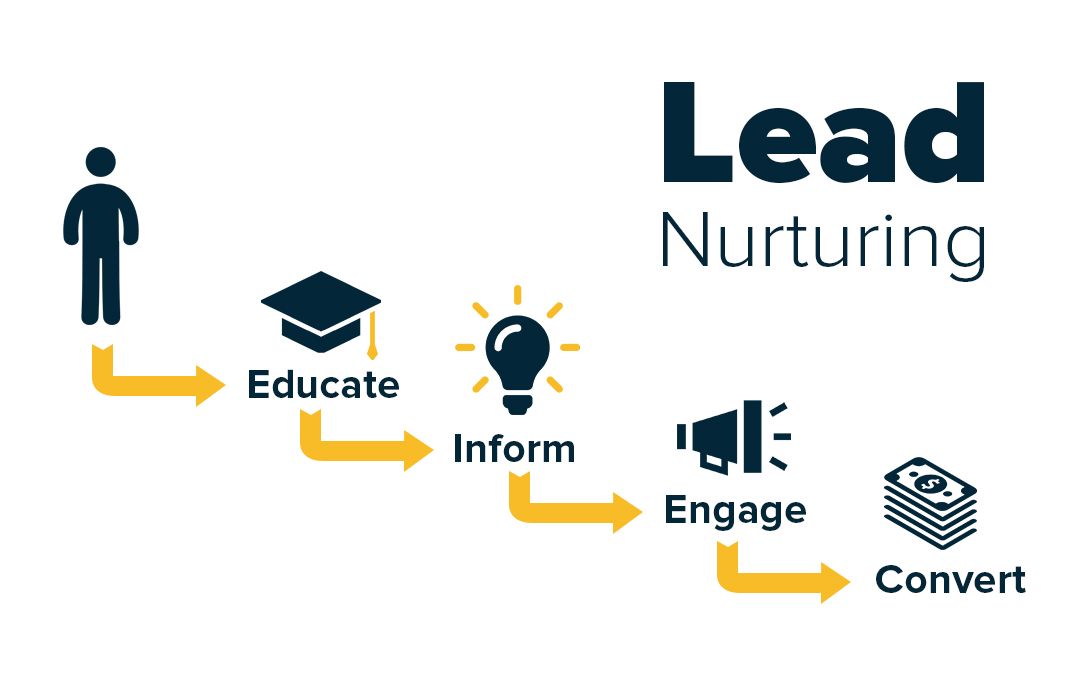
In the world of business, converting prospects into loyal customers is the ultimate goal. However, this process requires more than just attracting leads—it demands effective lead nurturing. In this blog post, we will delve into the art of lead nurturing and explore best practices that can help you cultivate relationships, build trust, and successfully convert prospects into customers. By mastering these strategies, you can optimize your lead conversion efforts and drive business growth.
- Define Your Buyer’s Journey: Understand the stages your prospects go through before making a purchasing decision. Map out your buyer’s journey, from awareness to consideration and decision-making. This framework will guide your lead nurturing efforts and enable you to deliver targeted content at each stage.
- Create Valuable and Relevant Content: Craft high-quality content that educates, informs, and solves your prospects’ pain points. Develop blog posts, e-books, case studies, and videos that address their specific challenges. By offering valuable information, you establish yourself as a trusted authority and keep prospects engaged throughout their journey.
- Segment Your Leads: Segment your leads based on their interests, demographics, behaviors, and stage in the buyer’s journey. This segmentation allows you to tailor your communication and deliver personalized content that resonates with each group. By understanding their unique needs, you can nurture leads more effectively.
- Implement Marketing Automation: Utilize marketing automation tools to streamline your lead nurturing process. Set up automated email workflows that deliver relevant content based on lead behavior, such as downloading an e-book or visiting specific pages on your website. Automation saves time, ensures consistent follow-up, and increases the chances of conversion.
- Lead Scoring and Qualification: Develop lead scoring criteria to identify which prospects are more likely to convert into customers. Assign points based on their engagement level, interactions, and readiness to make a purchase. Prioritize your efforts by focusing on highly qualified leads, ensuring your resources are efficiently allocated.
- Personalize Communication: Tailor your communication to each lead’s specific needs and preferences. Use their name in emails, reference their previous interactions, and provide personalized recommendations. Personalization shows that you understand their individual requirements, fostering a deeper connection and increasing the likelihood of conversion.
- Nurture through Multi-Channel Approach: Engage with your leads through multiple channels such as email, social media, and webinars. Diversify your touchpoints to stay top-of-mind and provide opportunities for interaction. Consistent and relevant communication across various channels nurtures leads effectively and helps build stronger relationships.
- Implement Lead Nurturing Workflows: Develop lead nurturing workflows that guide leads through their journey. For example, create a series of educational emails that progressively provide more in-depth content and address specific pain points. These workflows automate the process, ensuring a consistent and personalized approach to lead nurturing.
- Continuously Measure and Optimize: Track and analyze the performance of your lead nurturing efforts. Monitor key metrics such as email open rates, click-through rates, and conversion rates. Use these insights to identify areas for improvement and make data-driven optimizations to your lead nurturing strategies.

Mastering the art of lead nurturing is essential for converting prospects into customers. By understanding your buyer’s journey, delivering valuable content, implementing automation, and personalizing your communication, you can nurture leads effectively and increase your chances of conversion. By following these best practices, you’ll be on your way to successfully cultivating relationships and driving business growth.
